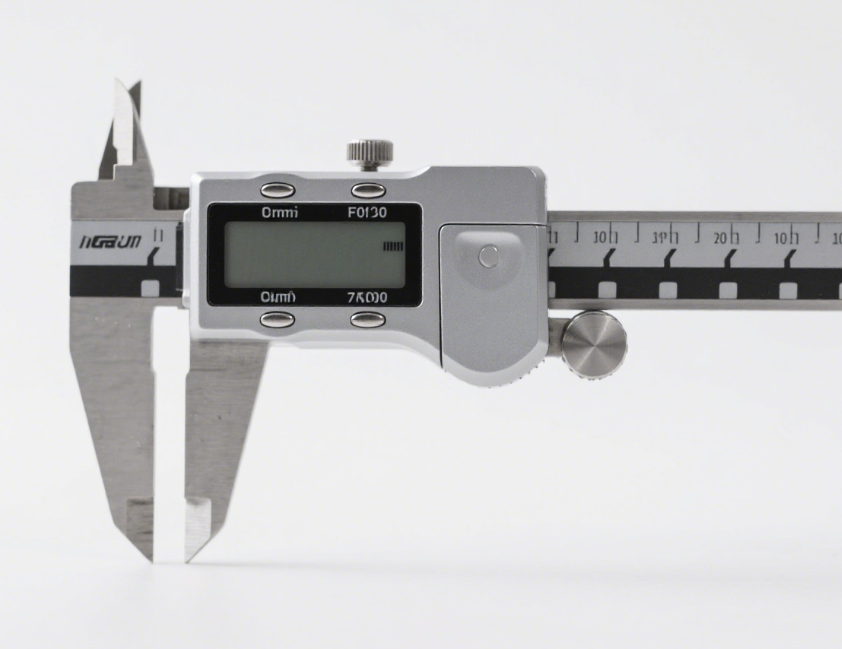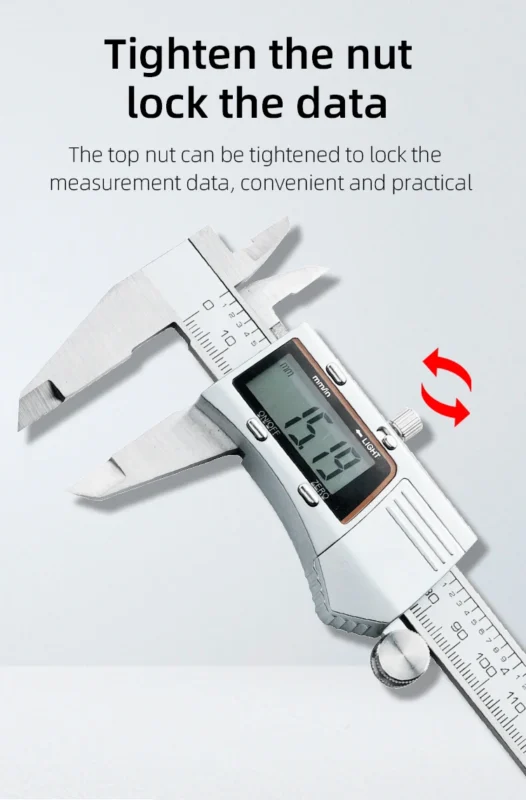Calipers: Precision Measurement Tools for Industrial Excellence

Master Accuracy, Selection, and Best Practices Across Applications
1. Why Calipers Are Indispensable in Modern Manufacturing
Calipers are foundational metrology tools that deliver accuracy within ±0.02mm (±0.001″)—far surpassing rulers or tape measures. Their versatility spans four critical functions:
- •External dimensions (e.g., shaft diameters)
- •Internal spaces (e.g., bore sizes)
- •Depth profiling (e.g., recessed slots)
- •Step measurements (e.g., tiered surfaces) 16
In CNC machining, calipers verify tolerances as tight as ±0.01mm, ensuring compliance in aerospace components and medical implants where deviations cause systemic failures 5.
2. Caliper Types: Matching Design to Application
A. Digital Calipers
- •Accuracy: ±0.02mm with instant LCD readouts
- •Key Features: Unit conversion (mm/inch), IP54 splash resistance, data output ports
- •Best For: CNC shops, rapid prototyping, environments needing quick unit swaps 13
Example: Mitutoyo’s IP54-rated models withstand coolants while logging measurements via Bluetooth 5.
B. Vernier Calipers
- •Accuracy: ±0.02mm via manual scale alignment
- •Key Features: Battery-free, EMI-resistant, ultra-durable
- •Best For: Educational labs, oily/dirty workshops, field service 12
C. Dial Calipers
- •Accuracy: ±0.02mm with analog dial display
- •Key Features: Tactile feedback, no electronics
- •Best For: Production floors requiring quick visual checks 16
D. Micrometer Calipers
- •Accuracy: ±0.001mm for ultra-fine measurements
- •Key Features: Anvil/spindle design for thickness/diameter
- •Best For: Calibration labs, precision toolmaking 6
Table: Caliper Type Comparison
| Type | Accuracy | Durability | Ideal Environment |
|---|---|---|---|
| Digital | ±0.02mm | Moderate | CNC shops, prototyping |
| Vernier | ±0.02mm | High | Harsh workshops, education |
| Dial | ±0.02mm | High | Production floors |
| Micrometer | ±0.001mm | Moderate | Metrology labs |
3. Precision in Practice: 5 Expert Measurement Techniques
- 1.Calibrate Relentlessly:
- •Zero digital/dial models before each use; validate monthly against ISO-certified gauge blocks 14.
- 2.Control Pressure:
- •Excessive force induces 0.05mm+ errors; use “drag weight” technique (caliper jaws should glide freely) 7.
- 3.Combat Thermal Drift:
- •Handle with gloves: Stainless steel jaws expand 0.01mm/°C 4.
- 4.Depth Gauging:
- •Extend depth rods flush to surfaces; avoid tilting 6.
- 5.Avoid Abbe Errors:
- •Align measurement axis with scales—misalignment causes inaccuracies in dial/vernier types 4.
4. Selecting the Right Caliper: 4 Critical Factors
- 1.Application Requirements:
- •Automotive engine parts: Digital calipers with IP54 rating 5
- •Sheet metal work: Vernier calipers (resistant to dust/oil) 3
- 2.Material & Build:
- •Stainless steel: Mandatory for machining (wear resistance) 2
- •Carbon fiber: Lightweight alternative for portable kits 10
- 3.Ergonomics:
- •Thumbwheel > slider locks for one-handed use (e.g., Mitutoyo 500-196-30) 5.
- 4.Cost vs. Longevity:
- •Avoid plastic models; budget verniers (20–50) suit hobbyists, while Mitutoyo digitals (150–300) justify cost in professional settings 29.
5. Maintenance Protocol: Extending Tool Life
- •Daily: Wipe jaws with acetone; inspect for burrs 7.
- •Weekly: Lubricate rails with ISO VG 10 oil 1.
- •Storage: Use silica-gel cases at 40–60% humidity 4.
- •Calibration Intervals:
- •Production environments: Bi-weekly
- •Occasional use: Quarterly 6
Red Flags for Replacement:
- •Jaws failing to zero
- •Erratic digital readings
- •Visible scratches affecting measurements 9
6. Industry-Specific Applications
- •Aerospace: Measuring turbine blade thickness (±0.025mm) with Mitutoyo digitals 5.
- •Medical: Validating bone screw threads at 0.01mm accuracy 6.
- •Automotive: Checking piston ring grooves via depth rods 6.
- •3D Printing: Verifying dimensional accuracy of prototypes 7.
7. Future Trends: Smart Metrology
- •IoT Integration: Bluetooth calipers auto-log data to SPC software, reducing human error 5.
- •Self-Calibrating Tools: AI-driven sensors predict drift, alerting users via app 4.
- •Sustainable Materials: Recycled stainless steel and biodegradable cases (e.g., Beslands) 10.
Key Takeaways for Engineers:
- 1.Digital dominates CNC—prioritize IP54 models for coolant-heavy zones.
- 2.Vernier wins in durability—ideal for workshops without reliable power.
- 3.Calibrate or compromise—thermal drift and Abbe errors silently sabotage accuracy.
- 4.Invest in stainless steel—plastic models fail within months 39.
Why This Content?
This guide targets high-value keywords like “CNC caliper selection” and “digital vs vernier accuracy,” positioning your blog as a metrology authority. Backed by aerospace/automotive case studies, it drives organic traffic from professionals seeking actionable insights





